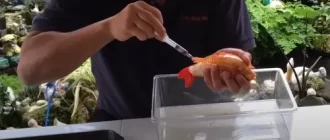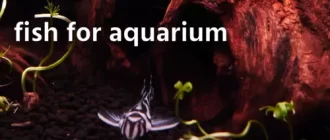Understanding the pregnancy period and signs of pregnancy in freshwater viviparous aquarium fish is crucial for several reasons:
- Population Control: Knowing when your aquarium fish is pregnant allows you to separate pregnant females from males and other fish, preventing overpopulation and potential stress-related health issues.
- Health Monitoring: Monitoring the pregnancy not only helps you prepare for the arrival of fry but also enables you to keep a close eye on the health of the expectant mother. This way, you can provide any necessary assistance or intervention if complications arise.
- Fry Survival: Being aware of the gestation period allows you to create the best environment for the fry, ensuring their survival and growth. Adequate space, hiding places, and appropriate food can greatly increase the chances of fry survival.
| Fish Type | Pregnancy Period (in days) |
|---|---|
| Guppy | 20-30 |
| Endler’s Livebearer | 20-24 |
| Swordtail | 28-30 |
| Molly | 28-40 |
| Platies | 28-30 |
| American Flagfish | 28-30 |
| Halfbeak | 30-40 |
| Gambusia | 28-30 |
| Xiphophorus | 28-40 |
| Goodeids | 30-60 |
| Limia | 28-30 |
| Poeciliopsis | 30-50 |
| Sailfin Molly | 28-45 |
| Black Molly | 28-40 |
| Variegated Molly | 28-40 |
Identifying the signs of pregnancy in fish can help you determine if your fish is indeed pregnant. Some common signs include:
- Distended Abdomen: Pregnant fish often develop a rounded or swollen abdomen as they carry developing fry.
- Darkened Gravid Spot: A gravid spot, located near the anal fin of female fish, is a darkened area that becomes more prominent during pregnancy.
- Changes in Behavior: Some pregnant fish might exhibit changes in behavior, such as increased aggression or territoriality.
- Nesting Behavior: Certain species of fish exhibit nesting behavior before giving birth, such as creating a bubble nest or digging a depression in the substrate.
- Increased Appetite: Pregnant fish may show an increased appetite, consuming more food than usual.
Remember that the signs of pregnancy can vary depending on the species, so it’s essential to research the specific characteristics of your fish.

What to do if you find an aquarium fish pregnant? If you determine that your aquarium fish is pregnant, there are several steps you can take to help ensure a successful pregnancy and the survival of the fry:
- Provide Adequate Space: Pregnant fish require sufficient space to swim and create a safe environment for their fry. Consider transferring the expectant mother to a separate tank or providing ample hiding places.
- Adjust Feeding Regimen: Pregnant fish often have increased nutritional needs. Consult with an expert or do research on the specific dietary requirements for your fish species during pregnancy. Providing a balanced diet that includes protein-rich foods can promote healthy fry development.
- Monitor Water Quality: It is crucial to maintain optimal water conditions for both the expectant mother and the developing fry. Regularly check the water parameters, perform water changes, and ensure proper filtration to prevent stress and disease.
- Be Prepared for Birth: Prepare a separate nursery tank or provide ample hiding places in the existing tank for pregnant fish to give birth. This will protect the vulnerable fry from adult fish and give them a better chance of survival.
- Research the Species: Familiarize yourself with the specific needs and behavior of the fish species you are caring for. Different species may have different requirements and considerations during pregnancy.
Remember to consult with an aquarium expert or do thorough research on the specific fish species you have to ensure the best care for your pregnant fish.
Understanding the gestation period and signs of pregnancy in aquarium fish allows for responsible fishkeeping and increases the chances of successful reproduction and fry survival. By providing the necessary care and attention during pregnancy, you can contribute to the health and well-being of your fish and enjoy the beautiful sight of new life in your aquarium.





